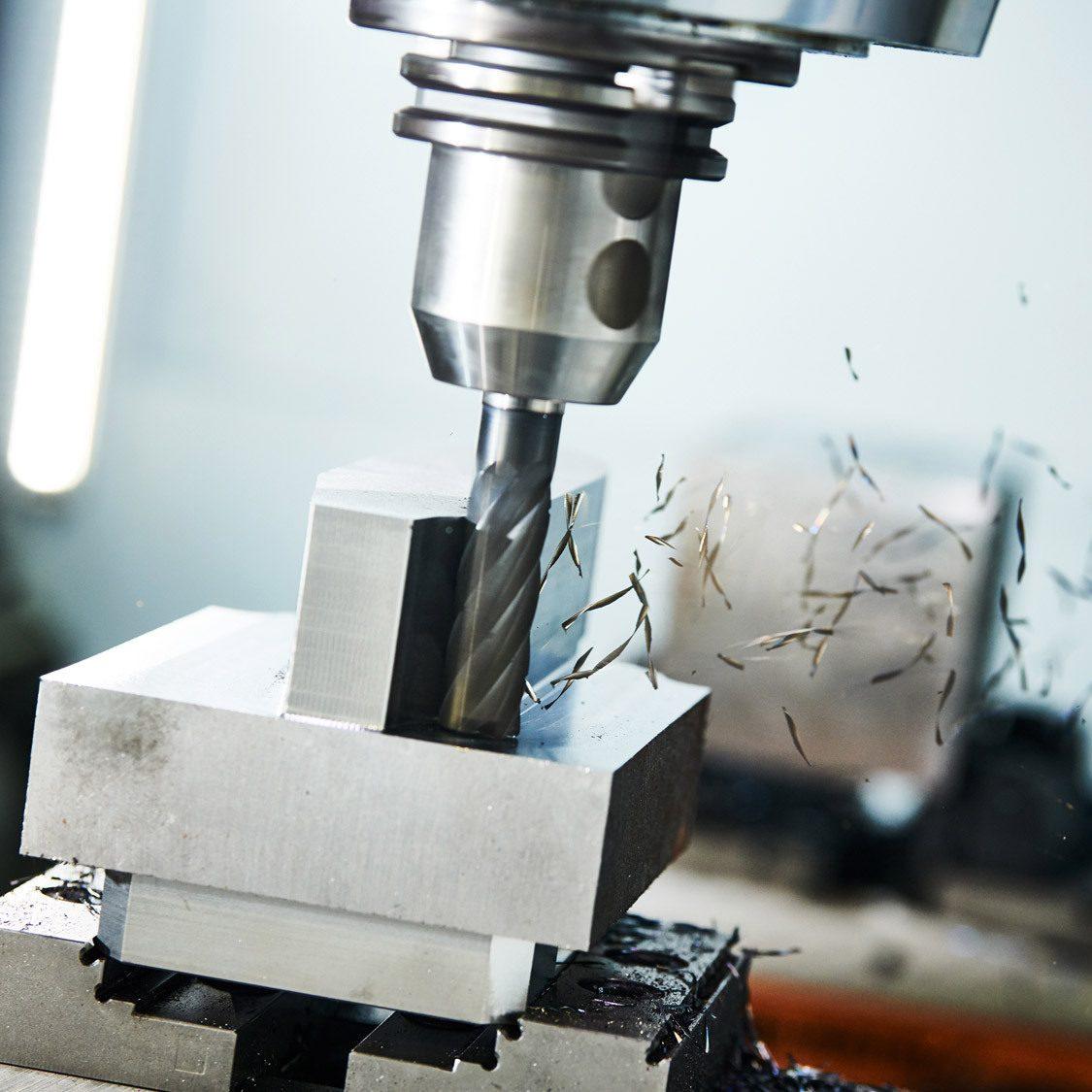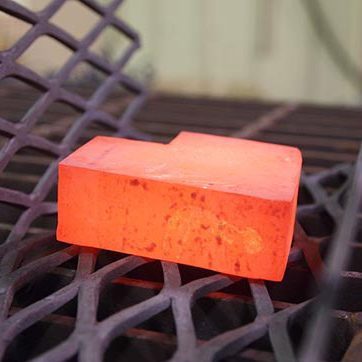How do we do it?
Wire-cut EDM
Wire-cut EDM is an advanced technique for machining electrically conductive materials. The machine uses an electrically charged brass wire that follows a programmed path, generating sparks to precisely remove material from the workpiece.
We use this technique to “cut out” the various precision components that make up a progressive die tool from tool steel. The operator’s craftsmanship and the machine’s precision play a crucial role in the quality of the products made with these tools. This is exactly why we keep this capability in-house and leverage our knowledge to help you produce the perfect product.

What can we do with Wire-cut EDM?
Our advanced Fanuc Robocut Alfa-OC wire EDM machine can handle materials of any hardness. It can cut simple shapes such as circles and rectangles, as well as more complex forms like cones and pyramids. Even very narrow slots and small internal diameters are possible, with incredible precision down to 1–2 microns. Want to know more? We’re happy to help!
Machine ParkCNC Machining
CNC machining is a collection of advanced techniques we use in our toolmaking department to machine metal components with incredible precision.
CNC machines cut, drill, and shape metal parts with high accuracy, following carefully programmed instructions from our engineers. The result is components that fit perfectly and meet our exact design specifications.

Which CNC machining techniques do we offer?
Our toolmaking department uses various CNC machining techniques, including milling, (counter)sinking, turning, and tapping. Exact specifications can be found in our machine park overview, and we are happy to provide additional information if needed.
Machine ParkSurface Grinding
Grinding is used in our toolmaking department to achieve a precise smooth surface or exact thickness (precision grinding). The CNC-controlled surface grinder uses the cutting edge of the grinding wheel across the workpiece until the desired finish is achieved.
The selected grinding grain determines the surface smoothness or roughness. Smaller grains create smoother surfaces. A characteristic of this grinding method is the high cutting speed combined with minimal material removal.

When to use surface or precision grinding?
The height and surface finish of various tool elements must be extremely accurate. To meet these specifications as closely as possible, components are processed using surface or precision grinding. Questions about this process or its possibilities? We’re happy to assist!
Machine ParkHardening
When steel with a minimum carbon content of 0.3% is heated above 800°C and then quenched in water, oil, or a salt bath, a very hard but brittle martensitic structure is formed. The resulting hardness depends on the carbon content—the higher the carbon, the harder the steel—and the percentage of martensite formed in the core, which depends on the critical cooling rate.

Why harden?
In our toolmaking department, we have a hardening furnace and cooling baths to apply this technique to tool components, extending the lifespan of the tools we produce.
Machine ParkTool Assembly
Once all components for a tool have been manufactured and inspected according to specifications, our toolmakers assemble the tool in the workshop. Together with the engineer overseeing the project, the tool is inspected and approved for test production. During this trial, the tool’s performance is tested, and it is assessed whether the products meet the customer’s specifications. These samples, along with accompanying measurement reports, are presented to the customer by the engineer and the commercial manager.
What challenge do you have for us?
Do you have a question about our expertise or machines? We are happy to assist

